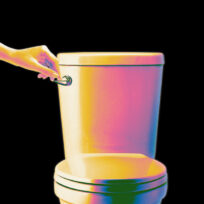If the women gracing our reality TV screens are any indication, the fillers trend isn’t slowing down anytime soon. The statistics confirm this: in the United States, the use of fillers has increased tremendously from 1.8 million procedures in 2010 to 2.68 million in 2018, according to data from the American Society of Plastic Surgeons. With so many people going under the needle, I *Carrie Bradshaw voice* couldn’t help but wonder: are fillers even safe? To find out, I spoke with Dr. Oren Tepper, a board-certified plastic surgeon, and the Director of Aesthetic Surgery at Montefiore Health System.
What Exactly Are Fillers?
Like the name suggests, fillers are used to fill in wrinkles and other creases or depressions on the face by injecting a substance into the facial tissue. There are a variety of substances that can be used depending on what the patient is trying to achieve and the doctor’s preferences. Some examples are hyaluronic acid, collagen, fat and even stem cells.
Who Are Good Candidates For Fillers?

Because fillers can be used to address so many different facial issues, most people are good candidates for fillers. As far as the age range, Dr. Tepper says he has seen patients as young as in their twenties to those in their elderly years taking advantage of the procedure.
Who Should NOT Get Fillers?
Of course, those that have had bad reactions in the past are more likely to have issues again. You should also avoid fillers if you have a bleeding disorder, inflamed skin, are taking blood thinners, are pregnant or breastfeeding, or have a history of an allergic reaction to fillers.
What Are The Side Effects?
Swelling is to be expected and can range from being minor to requiring a few days to a week to subside. More seriously, a bluish discoloration can occur if the fillers are injected too close to the skin and, in rare cases, if the filler finds its way into the bloodstream, it can occlude the arteries and result in tissue loss. Dr. Tepper says that these more serious complications are relatively rare, however, occurring in fewer than 1% of cases. The FDA also cites scarring, blurred vision, and blindness as other rare but serious risks that can occur if the filler is injected into a blood vessel.
How Much Is Too Much?

According to Dr. Tepper, the general rule of thumb is that if somebody notices you have fillers, you’ve gone too far. I guess most Bravolebrities have yet to get this memo. The goal is to subtly enhance your natural facial features—key word being subtly. Another important factor is ratios. Dr. Tepper says that while “volume alone may not be the threshold for what makes somebody look unnatural or natural, the ratio of your upper lip to your lower lip is a real giveaway.” Generally, when the upper lip is equal to or bigger in size than the lower lip, the result looks overdone and unnatural. What’s worse, an oversized upper lip can actually make someone appear older. Too much filler on the upper lip pulls it down and accelerates its natural drooping, which, according to Dr. Tepper, is about 1 millimeter every decade. Great, now I have another thing to be worried about. Another option, if you’re thinking of getting lip fillers in particular, is to take a more comprehensive approach and consider how you want your mouth to look as a whole. Dr. Tepper recently teamed with aesthetic dentist Dr. Jonathan Levine to introduce LipSync, a dual-specialty approach that changes both lip length and tooth position, so your entire smile looks better and you avoid the dreaded balloon lips effect.
But if you do go too far, there are some ways you can fix a f*ck up. According to the American Board of Cosmetic Surgery, mild irregularities like lumpiness or slight asymmetry may be fixed be massaging the area, which your provider can do or help you do at home. Certain types of fillers can be dissolved by injecting an enzyme (more on that in a sec), but otherwise, the best option is just to wait for the fillers to get absorbed by your body.
How Long Does It Last?

This depends on which type of filler is injected into the face. Dr. Tepper estimates that hyaluronic acid fillers will last anywhere from six months to a year and a half. One of the benefits of using hyaluronic acid is that if you are unhappy with the results, there’s an enzyme that can be injected afterwards to dissolve the filler. For those seeking something longer lasting, approximately half of any fat injected as filler stays in the face, according to Dr. Tepper. While there are permanent fillers such as silicone, Dr. Tepper does not recommend using them. Not only are the results irreversible, they can lead to disfigurement, infection and other serious problems. Yikes.
What’s This Going To Cost Me?
This varies tremendously depending on the filler used, the practitioner you go to and the area(s) to be treated, but Dr. Tepper estimated that the procedure usually costs about $1,000 per area on average.
Are There More Natural Alternatives?
While sadly there is no magic face cream that will annihilate your wrinkles and pay off your student loans, certain fillers are more natural than others. Using fat or stem cells may be a good choice for those who don’t like the idea of injecting unnatural substances into their body. Dr. Tepper will often inject saline into the desired area to give the patient a sense of the results, but this only lasts several hours rather than several months. A lip lift is another procedure that can add volume without injecting filler. If you’re looking for something sans needle, topical retinoids are a good preventative measure that can help fight wrinkles and hold off the need for the needle.
What Should I Know Before Committing?
It’s important that patients considering fillers understand exactly what they are getting into. In Dr. Tepper’s experience, many people mistake overdone filler for botched plastic surgery: “The overdone lips, the overinflated cheeks. Those are not surgical issues, those are overfilling.” In order to avoid this, it’s okay to start small and get a few injections in stages over a period of time in order to carefully assess the results instead of doing everything at once. This is especially true for those who haven’t had the procedure before. Dr. Tepper uses MirrorMe3D, an innovative, new visual technology with the ability to scan and print out a 3D version of your face. This allows patients to see what they could and should look like following a procedure, as well as what has been done throughout the years in case they visit more than one doctor.
At the end of the day, fillers are generally safe and effective, so long as you stick to the non-permanent versions and visit a doctor with proper training and credentials. While it might seem tempting to click on that 50% off Groupon, refrain, lest you end up looking like a case study on Botched. Or, we could all just collectively agree that wrinkles are perfectly natural and forego the whole thing entirely. Crazy, I know.
Images: Sara Bakhshi / Unsplash; Giphy (3)





















































